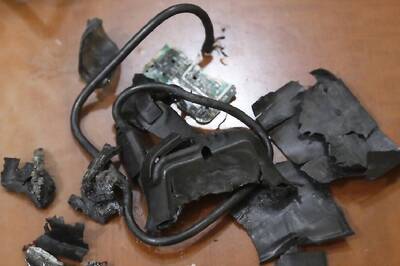
views
NASA's Mars-bound InSight spacecraft is on track for a soft touchdown on the surface of the Red Planet on November 26, the US space agency said. Engineers will be keeping a close eye on the stream of data indicating InSight's health and trajectory, and monitoring Martian weather reports to figure out if the team needs to make any final adjustments in preparation for landing, NASA said in a statement.
"Landing on Mars is hard. It takes skill, focus and years of preparation," said Thomas Zurbuchen, associate administrator for the Science Mission Directorate at NASA Headquarters here. "Keeping in mind our ambitious goal to eventually send humans to the surface of the Moon and then Mars, I know that our incredible science and engineering team will do everything they can to successfully land InSight on the Red Planet," Zurbuchen said. InSight, the first mission to study the deep interior of Mars, blasted off from Vandenberg Air Force Base in Central California on May 5.
The spacecraft will hit the top of the Martian atmosphere at 19,800 kilometres per hour (kph) and slow down to 8 kph -- about human jogging speed -- before its three legs touch down on Martian soil, NASA said. That extreme deceleration has to happen in just under seven minutes, it said. "There's a reason engineers call landing on Mars 'seven minutes of terror,'" said Rob Grover, InSight's entry, descent and landing (EDL) lead, based at NASA's Jet Propulsion Laboratory (JPL).
"We can't joystick the landing, so we have to rely on the commands we pre-program into the spacecraft," Grover said. One way engineers may be able to confirm quickly what activities InSight has completed during those seven minutes of terror is if the experimental CubeSat mission known as Mars Cube One (MarCO) relays InSight data back to Earth in near-real time during their flyby on November 26.
The two MarCO spacecraft (A and B) are making good progress towards their rendezvous point, and their radios have already passed their first deep-space tests. "Just by surviving the trip so far, the two MarCO satellites have made a giant leap for CubeSats," said Anne Marinan, a MarCO systems engineer based at JPL. "And now we are gearing up for the MarCOs' next test -- serving as a possible model for a new kind of interplanetary communications relay," Marinan said. If all goes well, the MarCOs may take a few seconds to receive and format the data before sending it back to Earth at the speed of light, NASA said. This would mean engineers at JPL and another team at Lockheed Martin Space would be able to tell what the lander did during EDL approximately eight minutes after InSight completes its activities, it said.



















Comments
0 comment